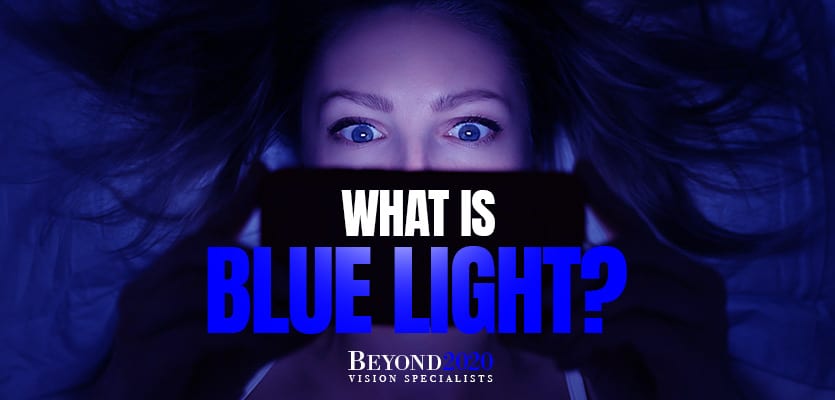What is blue light?
Home » What is Blue Light?

What is blue light?
Light consists of a considerable range of energy and wavelengths. In the middle of that is the type with the highest energy: blue light.
It is highly likely that you have experienced this type of light recently as its most common source is the sun. However, what has many people concerned, including your Odessa eye doctor, is the version of this type of light that emanates from digital screens such as televisions, computers, laptops, tablets, and smartphones, as that has negatively affected many of us in numerous ways.
The Sun
The reason why the sky is blue is because the blue wavelengths that are coming from the sun interact with the air and water molecules that surround our planet and cause that to occur. This type of light helps set our circadian rhythms, our natural sleeping and waking cycles. It also affects us positively in several other ways: increasing our alertness, elevating our moods, and speeding up our reaction times.
Electronic Devices
Several devices also utilize this type of light, which results in many of the same positive effects to occur. However, it is important to consider the main negative issue that can result from that: difficulty sleeping. You most likely do not want to experience a high level of alertness and a fast-moving mind as you are trying to calm yourself and prepare your brain for a good night’s rest.
For that reason, many devices offer a way for you to turn down or even turn off this type of light. This is usually through a setting that is labeled as “night shift” or “night light” or something similar. However, the screen may be difficult to see when this is turned completely off, which is why that latter option is most likely not going to be a viable one for you to use during the daytime or possibly even indoors at night with the lights on.
Also consider that the same circadian rhythm benefits that the sun provides you during the daytime hours are then being negated when you are taking in blue light during nighttime hours, resulting in sleep-cycle disruptions, sometimes severe ones, as a result.
Effects on Your Eyes
Although blue light’s effect on your ability to rest is noteworthy, another serious consideration to keeping in mind and one that your eye doctor Odessa is concerned about as well as how it can affect your eye health.
Blue light consists of short wavelengths, which results in the light that you are seeing flickering more easily and creating a glare, resulting in more clarity and brightness on the screen. As a result of this, many who use electronic devices for considerable amounts of time may experience retinal damage and macular degeneration in addition to the fatigue and headaches that can result from its mentally related effects.
In fact, just two hours spent looking at a digital device can result in you experiencing dry eyes, blurry vision, and weariness, all of which can then result in difficulty focusing, both physically and mentally.
Another reason for blue light’s ability to adversely affect our eye health is due to our eyes’ natural filters not providing adequate protection against it.
Digital Eye Strain
Also keep in mind that many of the ways that looking at screens will negatively affect your eyes is through digital eye strain that is unrelated to this type of light. This is because your eyes are generally working hard at seeing these screens regardless, which is partially due to your eyes blinking less often while you are engaging in this activity.
One of the most common ways that you can reduce eye strain, in general, is to take advantage of the 20-20-20 rule. To do this, make sure to look away from your screen for at least 20 seconds every 20 minutes, preferably towards far-away objects or, if that is not possible, to ones that are at least 20 feet from you.
Blue Light Glasses and Lenses
One protective option that some are taking advantage of is blue-light-blocking glasses or lenses. These do not require a prescription if you do not use corrective lenses or want to couple your regularly used contact lenses with blue-light-blocking glasses. Conversely, you can get these special types of glasses or lenses specifically prescribed for you. Note that these glasses and lenses can also help ease non-blue-light-related eye strain that may otherwise occur.
If you do start using these glasses, keep in mind that they are designed for looking at screens – i.e., for looking at objects that are about as far from your eyes as a screen would be. In other words, they will not be sufficient for seeing things that are further away, such as is necessary while you are driving.

